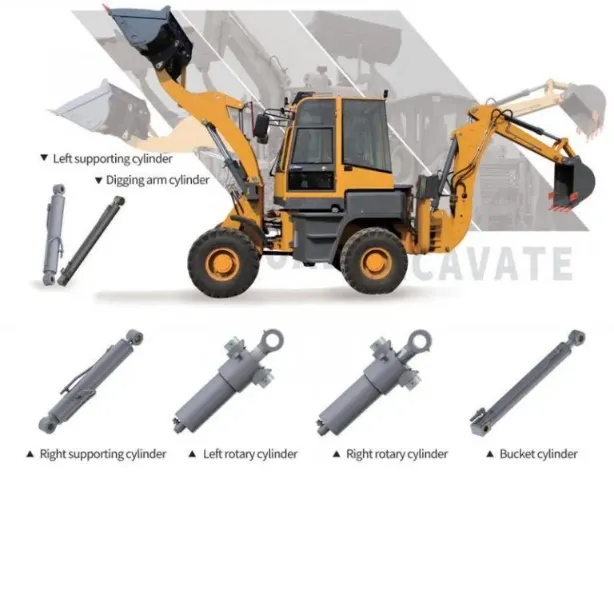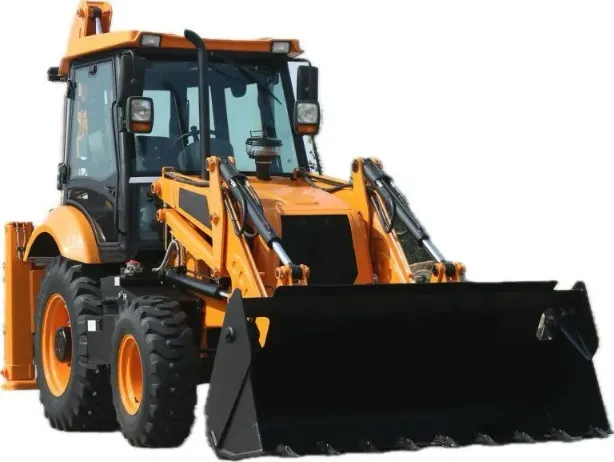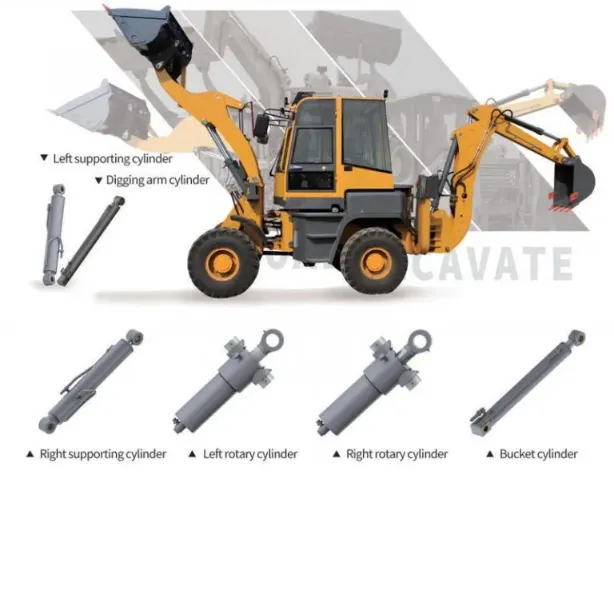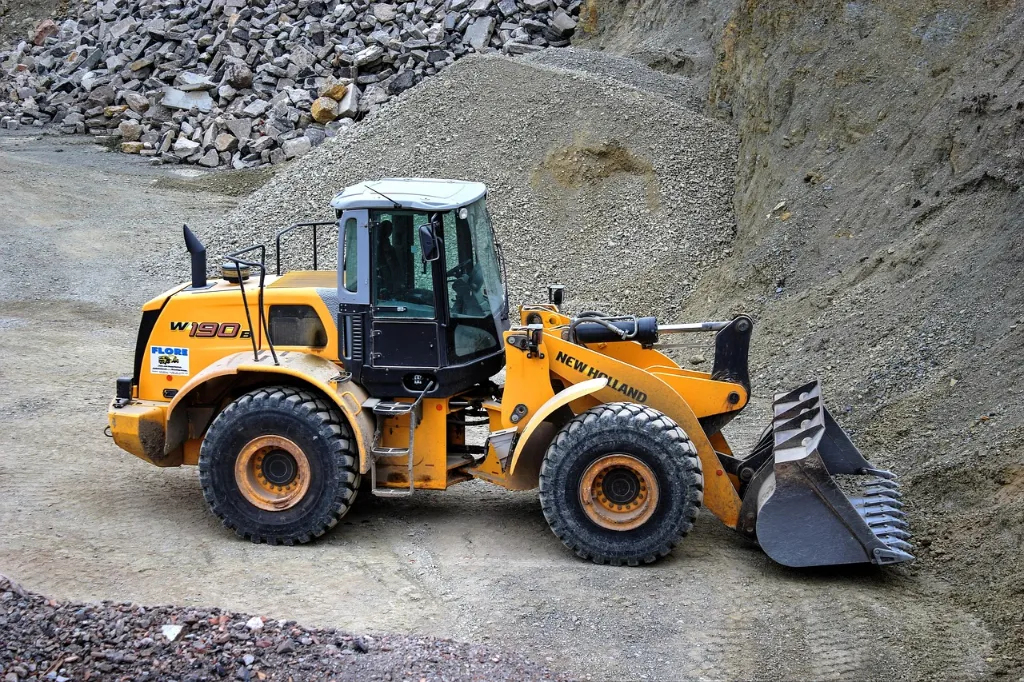
Hydraulic cylinders drive a lot of the tough work in construction. These gadgets change fluid pressure into real muscle power. They make machines like excavators and cranes work better. This piece looks at how they function, what they do, and their upsides. You’ll get useful tips on why top notch ones count in rough job spots.
Introduction to Hydraulic Cylinders in Construction Equipment
What is a Hydraulic Cylinder?
A hydraulic cylinder acts as a main mover in gear. It takes high pressure fluid and turns it into straight line push. Imagine fluid rushing into a closed space. It shoves a piston tied to a rod. That rod stretches out or pulls in. This moves machine arms or cutting edges. Pascal’s rule makes it straightforward, squeeze the fluid in one spot, and the push spreads everywhere the same. On building sites, this method tackles huge pushes without clunky gear setups. It’s basic but solid. Folks count on it every day for easy strength.
Common Types of Hydraulic Cylinders Used in Construction
Job sites need flexible cylinders. Single acting kinds push force one way alone. Fluid drives the piston forward. Then, weight or springs yank it back. You see them often in dump trucks. They tip out heavy stuff. Double acting ones handle push and pull both ways. Fluid forces extension and retraction. That’s great for backhoes. They need fast switches.
Telescopic cylinders stretch out in steps, like tubes inside each other. Excavator arms use them to dig deep pits. They stay short when folded up. Heavy duty versions have thick sides and tough rods. They take extreme weights, like in pile drivers. Each kind suits certain chores. Choose the wrong one, and things slow down. Match it to the task right.
Key Roles of Hydraulic Cylinders in Construction Machinery
Lifting and Lowering Heavy Loads
Hydraulic cylinders shine at handling tons of soil or cement. In excavators, they guide the bucket up and down with even control. Fluid push amps up the starting force. Small pumps lift what people couldn’t dream of. Loaders scoop and drop big hauls without sweat. Smart control wastes less energy. Workers tweak the flow for slow drops. No wild falls happen. Sites keep humming along quick. Have you watched a loader freeze halfway up? Faulty cylinders do that.
Precision in Movement and Positioning
Exact work marks solid building jobs. Cylinders let arms stretch just right in excavators. Buckets hit the spot needed. Valves control fluid speed for tiny tweaks. Digging bases? Tiny mistakes waste time and cash. Cranes use them to set hooks over steel grids spot on. Even moves cut extra fixes. Power alone isn’t enough. Control counts big. Drivers sense it in gear that reacts fast.
Absorbing Shocks and Reducing Equipment Stress
Bumpy ground pounds machines hard. Cylinders soak up jolts with soft pistons and fluid cushions. This eases bangs from rocky cuts. It saves the body’s frame and links. Bulldozers take blade bumps without full shock to the base. Outcome? Gear lasts longer overall. Repair records prove less damage with good cushions. Spots with nonstop shakes show it, machines endure extra seasons. Basic pads save serious money.
Factors That Affect Hydraulic Cylinder Performance
Cylinder Design and Size
Design shapes how well it works. Piston width sets the push strength, wider gives more oomph for big raises. Stroke distance rules how far it goes. That’s key for arm reaches. Load limit links to bore width and rod toughness. Go bigger for safe margins. But too large adds heft and drags speed. Experts weigh these for site needs. A bad match? It breaks soon under load. Field trials often fix real tweaks.
Hydraulic Fluid Quality and Maintenance
Fluid keeps it alive. Pure, thick oil lets it glide smooth and stay lubed. Grimy junk blocks valves. Pressure falls, and work slows. Swap it regular to dodge heat buildup. That thickens oil and hurts seals. Water bits rust things. Tip for upkeep: check filters often to spot problems soon. Bad fluid cuts life in half. Drivers learn, old oil makes rigs lazy on warm days.
Sealing and Wear Resistance Components
Seals trap fluid inside and block grit. Strong rubber or poly takes pressure jumps without drips. Rod tips get chrome coats to fight scratches. Barrels use smoothed steel for snug fits. Dust spots wear quick, so hardy stuff wins. Swap seals ahead of time. Leaks warn of woes. Good choices trim stoppages. Tiny bits snag huge tasks.

Benefits of High Quality Hydraulic Cylinders in Construction
Improved Equipment Efficiency
Prime cylinders quicken jobs. Tuned flow speeds cycles, grab, hoist, empty no delays. Exact moves trim fuel burn. Engines sit less. Loaders get snappier, upping output 20% or better. Sites wrap early, hit due dates. Gains build; easy runs cheer teams.
Enhanced Safety on Construction Sites
Safety roots in steadiness. Sure cylinders grip loads firm. No slips that smash folks. Tight control stops swings in gusts. Built in valves release pressure on overloads. No pops. Numbers show fewer mishaps with fine gear. Rules demand it, tested cylinders pass hard checks. Calm heads on wild sites.
Lower Maintenance Costs
Tough cylinders mean rare fixes. Solid seals and stuff slash call outs. Less halt keeps jobs rolling. Cuts backup rental hits. They run cleaner, stretch check times. Long run, bills plunge. Fleets with top parts log half shop hours.
Innovations in Hydraulic Cylinders for Modern Construction Machinery
Smart Hydraulic Cylinders with Sensors
Sensors add brains. Built in ones watch pressure, spot, and heat live. Info hits screens. Warns of too much before busts. Excavators auto tune for dirt changes. IoT ties fleets for far off checks. Tech guesses fixes, skips shocks. Smart sites grab it quick.
Lightweight and Energy Efficient Designs
Fresh stuff lightens weight. Mixes and new metals trim mass but keep grit. Easier to haul machines. Smart valves cut fluid use, save gas. Pumps vary power to task. Ease off light jobs. Savings pile, green ways too. Plans grow with battery mixes in electric setups.
Custom Solutions for Specialized Equipment
Made to order cylinders fit odd jobs. Tunnel diggers get long strokes for tight spots. Special bores match pressures in sea cranes. Makers like Shining Hydraulic build to specs. They blend right in. Custom ups work where stock flops. It’s spot on building.
Conclusion
Hydraulic cylinders change construction gear. They bring muscle, grip, and staying power. From hoisting to shock soak, they back smooth, safe runs. Things like design and care boost their punch. New ideas stretch limits. Pick top kinds for run time and savings. Shining Hydraulic shines with pro builds. They give solid fixes for hard sites. Spend smart, results come.
FAQ
Q1: What makes a hydraulic cylinder double acting?
Double acting cylinders use fluid push for shoving out and hauling back the rod. This offers full grip two ways. Suits gear with lots of flips, like excavators.
Q2: How often should hydraulic fluid be changed?
Swap every 1,000 to 2,000 hours running. Or quicker in grimy spots. Monthly filter peeks keep it sharp, dodge fails.
Q3: Can hydraulic cylinders be repaired or just replaced?
Lots get fixed up, seals, rods, barrels rebuilt. But bad wrecks need new. Experts check on site for best cost.
Q4: What’s the biggest innovation in hydraulic cylinders lately?
Smart sensors for live watches lead. They guess breaks, tune energy. Makes new gear brainier, safer.
Q5: Why choose custom hydraulic cylinders?
Off the shelf may miss odd chores. Customs fit loads and reaches exact. Boosts work, cuts grind in special stuff like drills.








